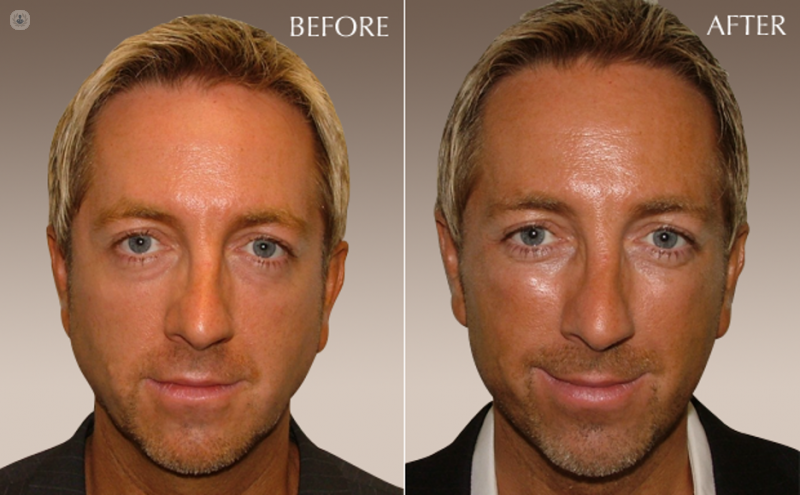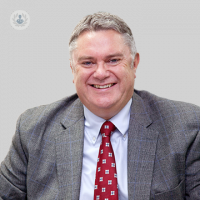Chin and cheek implants: are they right for me?
Autore:Our faces can begin to become sunken and tired looking over time. There may be moments where we wish to turn back the clocks for a more youthful appearance or change our bone structure. While time travel isn't possible, there are certain procedures that can definitely help you gain a younger-looking appearance.
We spoke with a top facial plastic surgeon , Mr Timothy Mellor, to find out what can be done, whether chin and cheek implants are appropriate and how long recovery time for these procedures is.

When are chin and cheek implants used?
Chin and cheek implants were once only really used for reconstruction of the face after damage caused by accidents, trauma, or due to birth defects. However, these implants have now become used more regularly by cosmetic surgeons to define a person's jawline or cheeks, creating a more flattering or youthful appearance.
For patients with a major chin deficiency, they may also require bone surgery to move the bone and place the chin further forward and reshape the chin.

Before and after cheek implants
What happens during facial implant surgery?
In the first consultation, you should explain how you'd like to look post-surgery. We would need to discuss the pros and cons of the different types of surgery and the material of the implants. We’d have discussion about the benefits, potential complications and risks.
Then, you would then be given time to think carefully about all the implications of the proposed surgery and a follow-up appointment would be made if you choose to proceed with surgery. You would sign a consent form, to highlight that you recognize and understand the benefits and risks associated with the procedure.
We would then take photographs of your face for clinical records and these would be stored securely under data protection laws.
The shape and shape of the implants are discussed at this consultation so you are completely involved in the decision about which ones you'd like to be used.
Anaesthesia
The operation is usually performed under a general anaesthetic. However, some patients can choose to be sedated via an intravenous drip and with a local anaesthetic, if they prefer.
The use of a general anaesthetic, like in any other surgery, carries a small additional risk. There is a small risk of deep vein thrombosis, which is also discussed with the patient.
How long does facial implant surgery take?
The procedure takes between 60-90minutes, depending on the desired result and the implant material used.
Chin implants
Incisions are made inside the mouth in on the gum in front of the lower teeth, if a bone operation (genioplasty) is being undertaken. The placement of a chin implant is normally undertaken through an incision beneath the chin. There will be a small scar, but it'll be hidden from view.
A pocket is created into which the lower-jaw implants are placed. Cuts under the skin are closed with stitches that dissolve. There is a high chance that there may be some altered sensation after this surgery because the nerve supply to the chin and lower lip is often encountered during the insertion of the implant. Although this is not likely to be permanent.
Cheek implants
Implants are placed over the cheekbone through a small incision inside the mouth, above the upper teeth. The surgeon creates a pocket in the tissue and then it is implanted in there.
Often patients wish for high cheekbones, the look of many models. To achieve this look, we insert malar implants in the outer upper cheek area.
Submalar implants are inserted in the mid-cheek region or lower area to help fill out a sunken face. As we age, our faces often become thinner and many people seek this kind of implant for a more youthful look. A more natural appearance can also be created with fat transfer using your own fat from a different area of your body. It has a rejuvenating effect and recreates a "rounder" look to your face.
Some patients choose to have both malar and submalar implants to fill out the main cheek areas and plump the cheekbones.
Often, to attach the implant to the bone and to stop the implant from moving, a small titanium screw is used, depending on the type of implant used. Incisions are closed with stitches that dissolve in a week or two.
How long is the recovery time of facial implant surgery?
Depending on the procedure, you can expect to return to work after a week to 10 days.
If you’re looking to find out more information about this confidence-boosting procedure, we recommend getting in contact with an experienced and reputable surgeon such as Mr Timothy Mellor . You can book a consultation with him via his Top Doctors profile .


